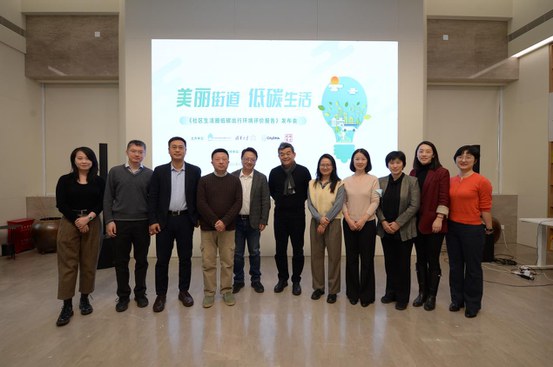Report Finds Better Community Design Enhances Low Carbon Transportation
With support from Energy Foundation China (EF China), China Sustainable Transportation Center (CSTC) released its report of Evaluating Low Carbon Transportation in Communities in collaboration with the School of Architecture at Tsinghua University, CityDNA, and the Green Research Center of Southern Weekly on December 30, 2021. Experts in urban planning and transportation and journalists from more than ten media outlets were invited to attend the launch event.
Authors of this report define communities as living spheres where residents make daily trips most frequently, and thus an important venue to help the transportation sector achieve China’s carbon peaking and neutrality goals. In order to find out how to meet residents’ demands for amenities and realize people-oriented low carbon urban design, EF China supported this project to evaluation and disseminate design that would be fit for low carbon transportation in communities. Over the past year, the project team studied 24 different types of neighborhoods in Beijing, Shanghai, Shenzhen, and Haikou, where they examined the correlations between the public’s willingness in low carbon transportation, their actual behavior, and urban design, before they put forward suggestions for improvement. The project team also interviewed focus groups of community residents to discuss typical problems revealed in the evaluation and identify the root causes behind.
Through text analysis of the proposals collected from community residents, the project team summarized key problems in meeting their needs for transportation improvement, including narrow sidewalks, insufficient supply of buses, among others. Based on past research and expert opinions, residents’ needs were then converted into objective evaluation indicators, which were categorized into four dimensions, i.e. safety, convenience, comfort, and vitality. In combination with the fifth dimension, namely users’ subjective satisfaction, the project team assessed the supply of low carbon transportation approaches in communities, public feedback, and other subjective and objective conditions, thereby concluding how friendly the urban design in these communities is for decarbonized transportation.
According to the study, the four cities all perform relatively good, except for the lack of dedicated bike lanes, a common problem demanding prompt solutions in various communities of these cities. The authors also found that, alleys are usually most ready for their residents’ low carbon transportation behavior, though different types of neighborhoods in the four cities show distinct characteristics. Analysis in the report shows that in order to improve residents’ satisfaction levels in the future, cities need to put more efforts on details, and collect and consider the needs and suggestions of residents of different communities in a more systematic manner. The reports also finds that residents of the four cities generally have a strong willingness in reducing their transportation emissions; however, whether such willingness can turn into actual low carbon behavior is closely related to how friendly the nearby urban design is for such action.
During the roundtable discussion, the new evaluation method was recognized by present experts, including Peng LIN, Secretary General of Tsinghua Urban Institute, Zhigao WANG, Director of the Low Carbon Cities Program of EF China, Wen XIONG, Deputy Director of the Faculty of Architecture, Civil and Transportation Engineering of Beijing University of Technology, Bo QIN, Professor of the Department of Urban Planning and Management of Renmin University of China, Yulin CHEN, Associate Professor of the School of Architecture of Tsinghua University, and Xing ZHAO, Deputy Director of the Community Cultivation and Planning Research Center of Beijing Municipal Institute of City Planning & Design. The experts also discussed on “how to make up for the shortcomings in developing low-carbon transportation environment in community-life circles by the government in the future” and “the obstacles in front of the public in choosing low-carbon transportation”.

The Evaluation Report of Low-carbon Transportation Environment in Community-Life Circles was launched in Beijing on December 30, 2021.
Photo by Southern Weekly





